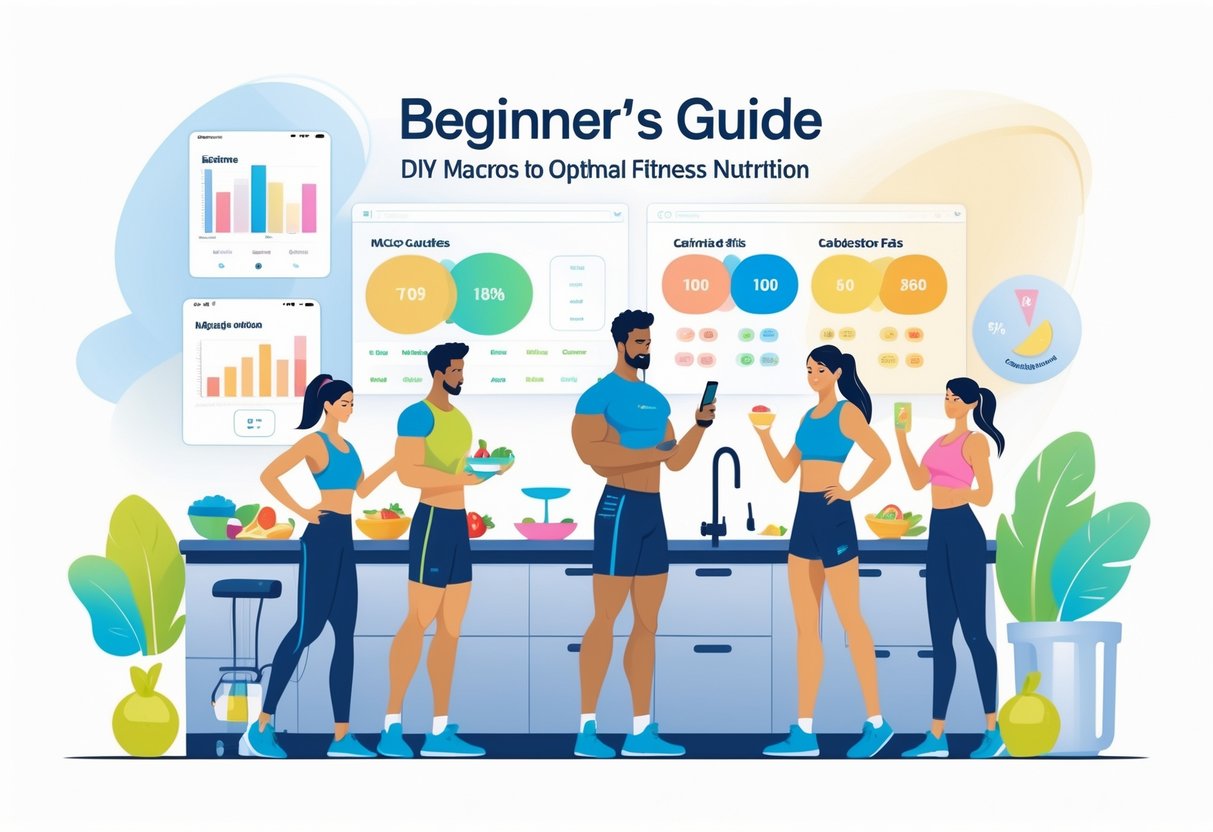Beginner’s Guide to DIY Macros for Optimal Fitness Nutrition
Overcoming Challenges and Staying Motivated

Navigating the world of macro counting can be daunting without the right strategies. It’s essential for individuals to address plateaus effectively, maintain motivation, and celebrate achievements to stay on track.
Dealing With Plateaus in Weight and Progress
Plateaus in fitness or weight loss are common and can be frustrating. When progress stalls, it’s crucial to reassess macro targets and adjust calorie intake as needed.
Modifying workouts by increasing intensity or trying new exercises can stimulate progress. Tracking small changes in body composition and strength can provide evidence of progress beyond the scale.
Taking note of these small victories can help maintain motivation. Consulting with a nutritionist or fitness expert to review current plans might also provide new strategies.
Maintaining Motivation for Macro Counting
Staying motivated with macro counting requires consistent engagement. Keeping track of daily macro needs and targets using tools like apps or journals ensures accountability.
Setting small, achievable goals related to nutrition can also help sustain interest. Varying meal plans with new recipes or ingredients can make macro counting less monotonous.
Planning meals ahead of time and prepping in advance can ensure adherence to macro targets. Sharing goals with a community or support group adds a social component that can enhance motivation.
Celebrating Milestones and Progress
Celebrating milestones is essential for maintaining a positive outlook on one’s fitness journey. Recognizing achievements, whether in the form of reaching health goals or consistently hitting nutrition targets, boosts morale.
Creating a visual representation, like a progress chart, allows individuals to visualize accomplishments over time. Setting specific, non-food-related rewards for achieving certain milestones can provide additional incentive.
Engaging in activities that align with a healthy lifestyle, such as a spa day or purchasing fitness gear, can serve as effective celebratory tools.
Frequently Asked Questions

Understanding how to count macros and tailor them to individual fitness goals is essential. Different strategies for macro distribution can significantly impact weight loss and workout performance.
Here’s what beginners need to know about these nutritional principles.
How can beginners effectively count macros?
Beginners should start by determining their daily caloric needs based on their age, gender, weight, and activity level. Using apps or online calculators can simplify the tracking process.
Consistency is crucial for success when learning to count macros for fitness goals.
What are the ideal macronutrient ratios for weight loss in females?
For females targeting weight loss, a common macronutrient ratio is 40% carbohydrates, 30% protein, and 30% fats. This balance can help maintain muscle mass while encouraging fat loss.
Adjustments may be necessary based on personal dietary needs and experience.
What strategies should one follow for pre and post-workout nutrition?
Pre-workout meals should include carbohydrates for energy and a small amount of protein. Consider options like a banana with peanut butter.
Post-workout meals should focus on replenishing glycogen stores and aiding muscle recovery with a mix of protein and carbohydrates, such as a protein shake with a piece of fruit.
How does one calculate macronutrient needs?
To calculate macronutrient needs, determine total daily energy expenditure (TDEE). Then, allocate calories to each macronutrient according to desired percentages.
Utilize an online TDEE calculator to assist in finding the right balance and ensure personalized nutrition plans.
Can you explain the 50/30/20 macronutrient distribution rule?
The 50/30/20 rule involves consuming 50% of calories from carbohydrates, 30% from protein, and 20% from fats. This distribution supports balanced energy levels and muscle maintenance.
It is especially useful for those not pursuing specific weight loss or muscle gain goals.
What does a basic macro diet plan for females involve?
A basic macro diet plan for females typically includes lean proteins like chicken and fish, whole grains, and plenty of vegetables.
Meals are portioned to meet specific macronutrient targets. The plan allows flexibility while ensuring nutritional needs are met.
